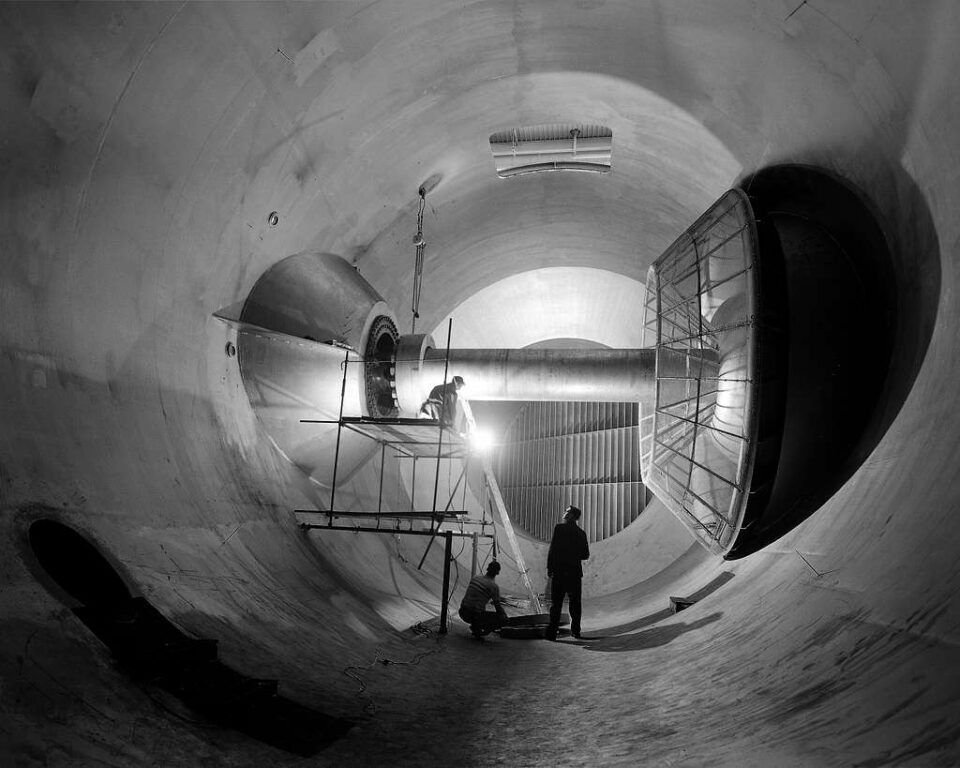Men stand in front of turning vanes inside the Altitude Wind Tunnel (AWT) at the National Advisory Committee for Aeronautics Aircraft Engine Research Laboratory in this February 1944 publicity photo. The photo was taken just weeks after the tunnel became operational.
The AWT was the only wind tunnel capable of testing full-size aircraft engines in simulated altitude conditions. A large wooden drive fan, located on the other side of these vanes, created wind speeds up to 500 miles per hour. Each corner of the rectangular tunnel had turning vanes, which straightened the airflow and directed it around the corners. This set of vanes was in the 31-foot-diameter southeast corner of the tunnel. These elliptical panels consisted of 36 to 42 vertical vanes that were supported by three horizontal supports. The individual vanes were 2.5 feet long and half-moon shaped. Each set of vanes took weeks to assemble before they were installed during the summer of 1943.
The Aircraft Engine Research Laboratory went through several name updates and changes through NACA and NASA history; it is now NASA’s Glenn Research Center in Cleveland.
Image credit: NASA





